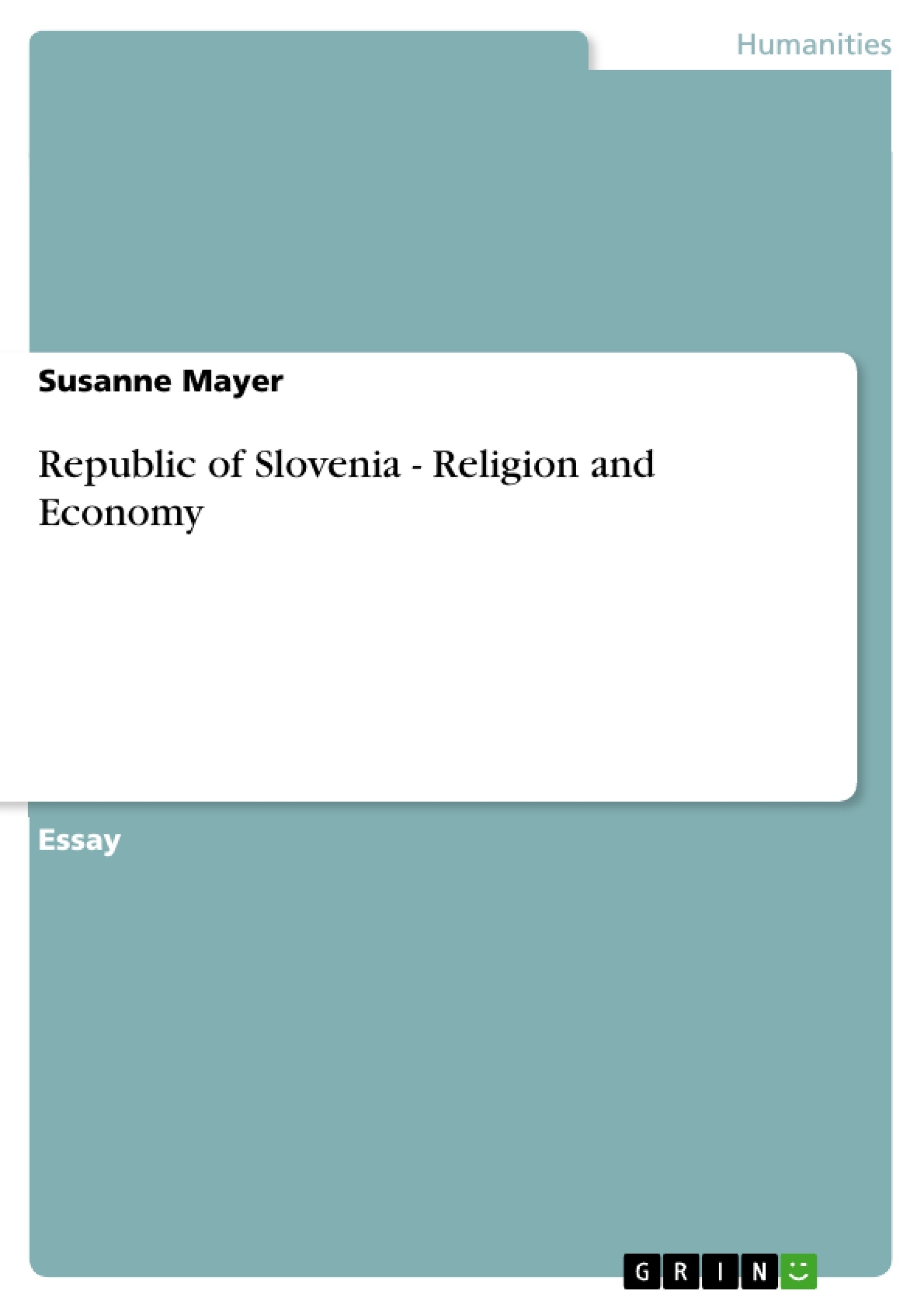The “Republika Slovenija“ is one of the new republics formed with the dissolution of Yugoslavia. It lies at the heart of Europe, neighbors are Austria, Hungary, Croatia and Italy. With its small transition economy and population of approximately two million, Slovenia is a model of economic success and stability for its neighbors in the former Yugoslavia. The country, which joined the EU in 2004, enjoys a GDP per capita substantially higher than any of the other transitioning economies of Central Europe.
Slovenia plans to adopt the Euro by 2007 and has met the ECU’s Maastricht criteria for inflation. (www.nationbynation.com/Slovenia/Economy.html&h=288&w=434&sz=12&tbnid=TD7) Despite its economic success, Slovenia also faces challenges. The economy which is currently mostly in state hands needs to be privatized, taxes are relatively high, and the labor market is often seen as inflexible. (www.nationbynation.com/Slovenia/Economy.html&h=288&w=434&sz=12&tbnid=TD7) The population of approximately two million Slovenians includes about 6,300 Hungarians and 2,300 Italians who form the two indigenous minorities whose rights are protected under the Constitution. Other ethnic groups include Croats, Serbs, Bosnians (Muslims), Yugoslavs, Macedonians, Montenegrins and Albanians. Population density is 98.3 inhabitants per km², which is much lower than in the majority of other European states (www.matkurja.com/en/country-info/) The following tables and charts give more detailed information about education, politics, religion, and economy and in Slovenia.
List of Content
2. Current situation of Slovenia
2.1. Education
2.2. Religion
2.3. Politics
2.4. Economy
3. Group values
4. General cultural profile based on religion
5. How to do business in Slovenia
6. Sources
7. Appendix
2. Current situation of the Republic of Slovenia under consideration of the religious, political, educational and economic state
illustration not visible in this excerpt
The “Republika Slovenija“ is one of the new republics formed with the dissolution of Yugoslavia. It lies at the heart of Europe, neighbors are Austria, Hungary, Croatia and Italy.
With its small transition economy and population of approximately two million, Slovenia is a model of economic success and stability for its neighbors in the former Yugoslavia. The country, which joined the EU in 2004, enjoys a GDP per capita substantially higher than any of the other transitioning economies of Central Europe. Slovenia plans to adopt the Euro by 2007 and has met the ECU’s Maastricht criteria for inflation. (www.nationbynation.com/Slovenia/Economy.html&h=288&w=434&sz=12&tbnid=TD7)
[Abbildung in dieser Leseprobe nicht enthalten]Despite its economic success, Slovenia also faces challenges. The economy which is currently mostly in state hands needs to be privatized, taxes are relatively high, and the labor market is often seen as inflexible. (www.nationbynation.com/Slovenia/Economy.html&h=288&w=434&sz=12&tbnid=TD7)
The population of approximately two million Slovenians includes about 6,300 Hungarians and 2,300 Italians who form the two indigenous minorities whose rights are protected under the Constitution. Other ethnic groups include Croats, Serbs, Bosnians (Muslims), Yugoslavs, Macedonians, Montenegrins and Albanians. Population density is 98.3 inhabitants per km², which is much lower than in the majority of other European states (www.matkurja.com/en/country-info/)
The following tables and charts give more detailed information about education, politics, religion, and economy and in Slovenia.
2.1. Education
The educational system is almost fully financed by the state budget. From 4.76 % in 1992, the share of the GDP allocated to education increased to significantly to 6 % in 1998. Due to this budget increase and reforms the educational profile of Slovenia's population is constantly improving. According to the 1991 census there is a high rate of literacy (99.6 %). Among people aged 25 to 64, 12 % have attended higher education, whilst on average Slovenes have 9.6 years of formal education. The best educated are those employed in the area of education and public administration. http://www.culturalprofiles.org.uk/Slovenia/Directories/Slovenia_Cultural_Profile/-6800.html
Compulsory education starting at the age of six covers 8 years. A new system targeted at the achievement of a higher educational level prolongs compulsory education to 9 years. http://www.euroeducation.net/prof/slnco.htm. http://en.wikipedia.org/wiki/Education_in_Slovenia
In the academic year 2002/2003 approximately 88.000 students were enrolled at Slovenia’s three universities: the University of Ljubljana, the University of Maribor and the University of Primorska. For undergraduate study programs no tuition is charged which offers an equality of chances. http://www.culturalprofiles.org.uk/Slovenia/Directories/Slovenia_Cultural_Profile/-6800.html
Summing up those educational factors, Slovenia is improving its education system to a Western European standard and is quite successful.
2.2. Religion
illustration not visible in this excerpt
The majority of Slovenes (almost 60%) are Roman Catholics, although there are around 30 other religious communities, spiritual groups, societies and associations registered in Slovenia.
illustration not visible in this excerpt
2.3. Politics
illustration not visible in this excerpt
Supreme Court (judges are elected by the National Assembly on the recommendation of the Judicial Council); Constitutional Court (judges elected for nine-year terms by the National Assembly and nominated by the president)
2.4. Economy
illustration not visible in this excerpt
[...]
- Quote paper
- Susanne Mayer (Author), 2006, Republic of Slovenia - Religion and Economy, Munich, GRIN Verlag, https://www.grin.com/document/58041
-

-

-

-
Upload your own papers! Earn money and win an iPhone X. -

-
Upload your own papers! Earn money and win an iPhone X. -

-
Upload your own papers! Earn money and win an iPhone X. -

-
Upload your own papers! Earn money and win an iPhone X. -

-
Upload your own papers! Earn money and win an iPhone X. -

-
Upload your own papers! Earn money and win an iPhone X.

